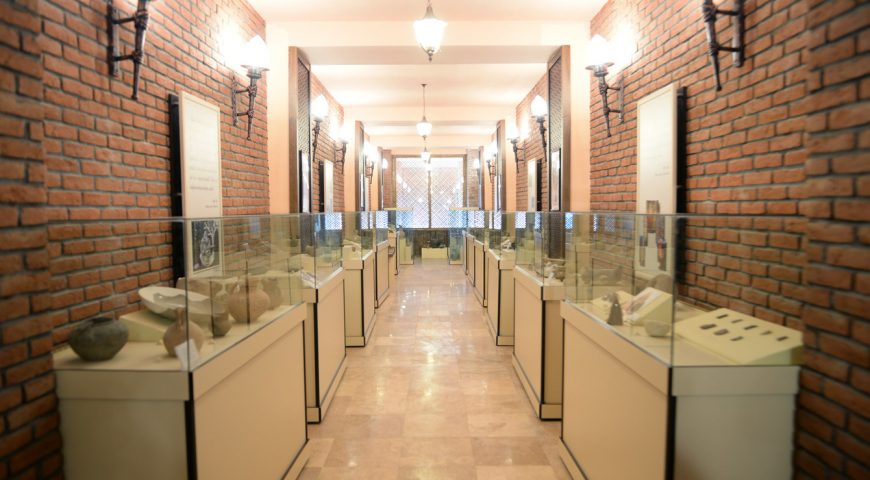
GANJA-STAATSMUSEUM
Ganja State History-Ethnography Museum named after Nizami Ganjavi is the largest museum in Ganja.
The museum is located in the former mansion of descendants of the last independent khan of Ganja. It was founded in 1924 and includes more than 30000 exhibits – the history of Ganja from ancient period till modern times, archaeological finds, and material-cultural monuments, ethnographic, epigraphic, and numismatic collections displayed in 18 halls.
Monumental complex Ganja Fortress Gates – the Museum of Archaeology and Ethnography is located on the entrance to the eastern direction of Ganja on the Baku-Gazakh highway.The fortress was built on the both sides of the highway and its total length is 50 meters with bastions of 22 meters. The main 5-storey part of the fortress is considered 7-storey with the plinth. The underground tunnel, which is 62 meters long, connects the both fortresses. The complex includes 2 iron gates, a gallery of the portraits of outstanding figures from Ganja, Military History Museum of Ganja, ethnographic museum dedicated to the lifestyle and culture of the population Ganja in the Complex. The gates have been made on the sketches of ancient Ganja gates made by master Ibrahim Osmanoghlu in 1063 which were damaged in the result of 1139 Ganja earthquake and kept in Gelati Monastery of Kutaisi after Demetrius I of Georgia took it.
The main foundation of the museum contains 24,785 exhibits, divided as follows: 4,483 in archaeology, 1,648 in numerical ethnography, 392 in artistry, 9 sculptures, 2,753 photographs, 9,59 documents, 3441 numismatic collection, 1984 books, 816 exhibits related to patriotism. A woman skeleton up to 220 cm high and accessories, as well as household items buried with her dated back to the 2nd millennium BC, Silver crown of Caucasian Albania era, lanterns discovered around Nizami Ganjavi’s grave, Ganja rugs, the flag of Ganja Khanate, coins related to different periods of Azerbaijan history, jewelry, pottery, metalworking samples are among them. The area of the museum is 972 m2, consisting of two departments – ancient period and modern period.

